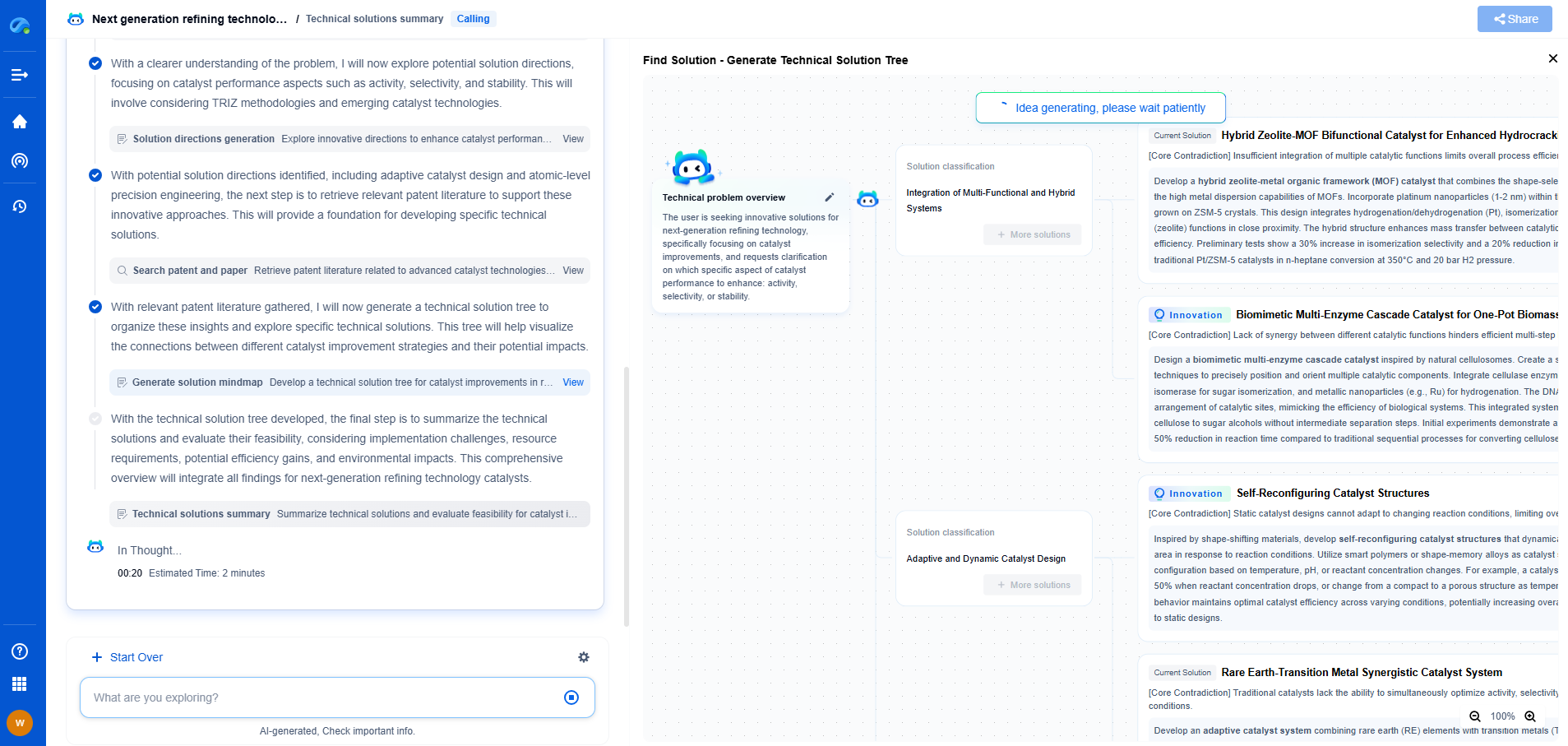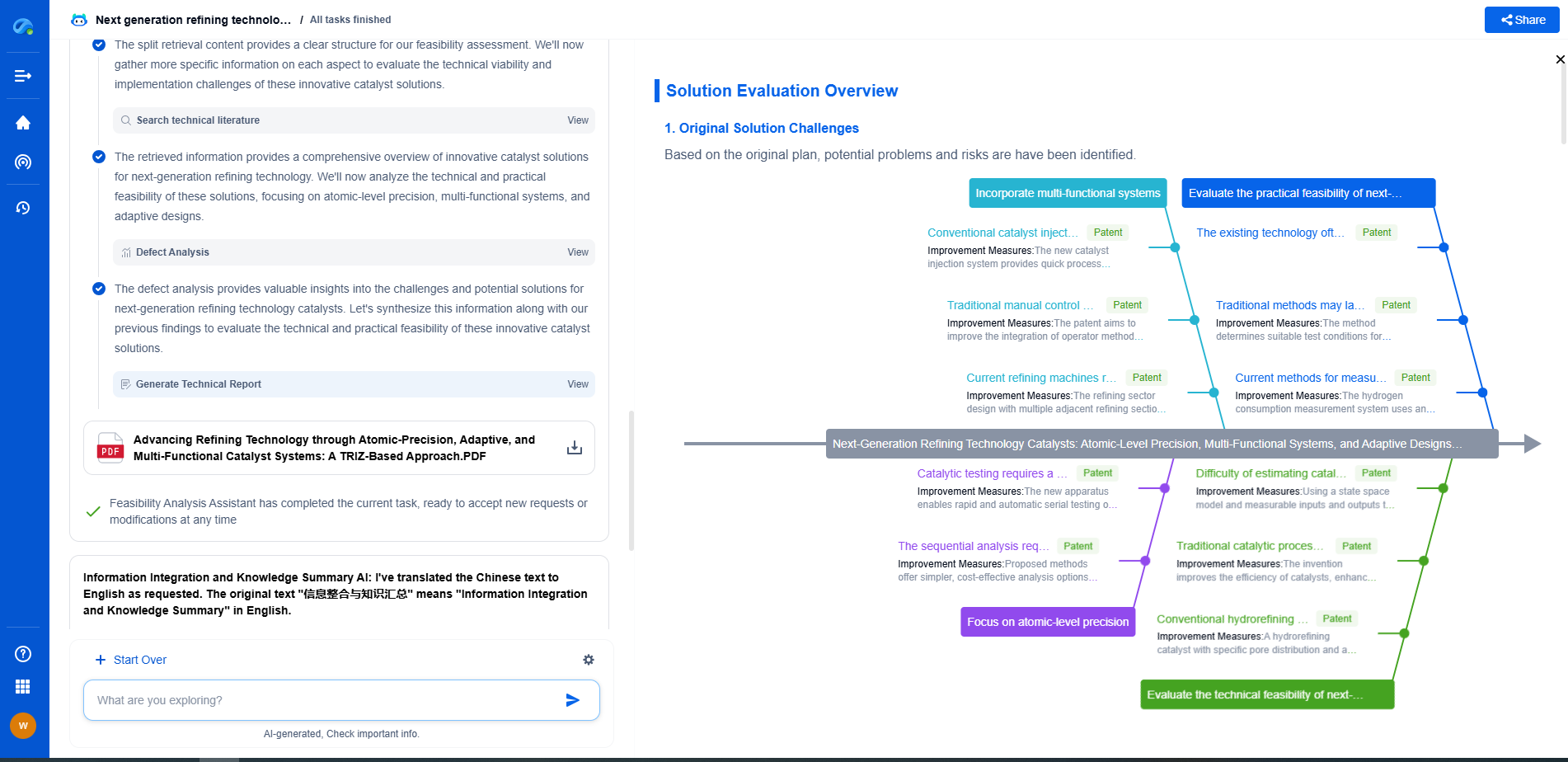Comparing Biodegradable Polymers: PLA vs PHA vs PBS
JUL 3, 2025 |
Biodegradable polymers have become a crucial aspect of sustainable development in recent years. As the world grapples with the environmental impact of traditional plastics, these materials offer a promising solution. Among the various biodegradable polymers available, Polylactic Acid (PLA), Polyhydroxyalkanoates (PHA), and Polybutylene Succinate (PBS) are three of the most prominent. Each of these polymers has unique properties and applications, making them suitable for different industries and purposes. In this article, we will delve into the characteristics, benefits, and challenges of PLA, PHA, and PBS, helping you understand which might be the best fit for your needs.
Understanding Polylactic Acid (PLA)
PLA is one of the most widely used biodegradable polymers, primarily derived from renewable resources like corn starch or sugarcane. Its popularity is largely due to its versatility and relatively low production cost. PLA is utilized in a range of applications, from packaging materials to medical implants. Its biodegradability is influenced by factors such as temperature, humidity, and the presence of microorganisms.
One of PLA’s significant advantages is its ability to be processed using standard plastic manufacturing equipment, making it an accessible choice for industries transitioning from traditional plastics. However, PLA does have some limitations, such as its relatively low thermal stability and brittleness, which can restrict its use in high-temperature applications.
Exploring Polyhydroxyalkanoates (PHA)
PHA is a family of naturally occurring biopolyesters produced by bacterial fermentation of sugars and lipids. The diversity within the PHA family allows for tailored polymer properties to meet specific application needs. PHAs are known for their excellent biodegradability and biocompatibility, making them suitable for use in medical applications, agricultural films, and packaging.
Despite their promising characteristics, the production of PHAs is currently more expensive than that of other biodegradable polymers like PLA. This cost is due to the complexities involved in bacterial fermentation and the subsequent polymer extraction process. However, ongoing research and technological advancements are expected to make PHA production more cost-effective in the future.
Examining Polybutylene Succinate (PBS)
PBS is a biodegradable polymer that is synthesized through the polymerization of succinic acid and butanediol. It is known for its good thermal resistance and mechanical properties, which are comparable to those of traditional plastics like polypropylene. PBS’s biodegradability in natural environments, such as soil and compost, makes it an attractive option for agricultural mulch films and packaging materials.
PBS also exhibits excellent processability, allowing for its use in injection molding, extrusion, and thermoforming processes. However, similar to PHA, the current production cost of PBS is relatively high compared to PLA, which can limit its widespread adoption. As bio-based production methods for succinic acid become more common, the cost of PBS is expected to decrease, enhancing its competitiveness in the market.
Applications and Market Trends
The choice between PLA, PHA, and PBS often depends on the specific requirements of the application, such as mechanical properties, biodegradability, and cost. PLA is prominently used in packaging, 3D printing, and disposable tableware due to its cost-effectiveness and ease of processing. PHA finds its niche in medical applications, where its biocompatibility is highly valued. PBS, with its superior thermal and mechanical properties, is gaining traction in the agricultural and packaging sectors.
The market for biodegradable polymers is expected to grow significantly as industries and consumers prioritize sustainability. Advances in production technologies and economies of scale are anticipated to make these materials more accessible and affordable, encouraging their broader adoption.
Conclusion
In conclusion, PLA, PHA, and PBS each offer unique benefits and challenges in the realm of biodegradable polymers. While PLA is currently the most cost-effective option for many applications, PHA and PBS provide superior properties in specific scenarios, such as medical and high-temperature applications. Understanding the characteristics and potential of each polymer can guide informed decisions for industries seeking to minimize their environmental impact. As technology progresses, the development and adoption of biodegradable polymers will likely play a pivotal role in creating a more sustainable future.
Transform Polymeric Innovation with Patsnap Eureka
From biodegradable polymers to high-performance composites, the world of polymeric compounds is evolving faster than ever—driven by the demands of sustainability, functional customization, and global IP competition. Whether you're exploring novel copolymer architectures, optimizing polymerization techniques, or tracking material patents in bioplastics, time-to-insight is everything.
Patsnap Eureka, our intelligent AI assistant built for R&D professionals in high-tech sectors, empowers you with real-time expert-level analysis, technology roadmap exploration, and strategic mapping of core patents—all within a seamless, user-friendly interface.
Whether you're working on next-gen packaging films, bio-based resins, smart polymers for electronics, or new thermal-resistant composites, Eureka accelerates your journey from idea to patent to product—with unmatched clarity and speed.
🔍 Experience how Eureka can power your polymer R&D with AI intelligence—start your free trial today and unlock the future of materials innovation.
- R&D
- Intellectual Property
- Life Sciences
- Materials
- Tech Scout
- Unparalleled Data Quality
- Higher Quality Content
- 60% Fewer Hallucinations
Browse by: Latest US Patents, China's latest patents, Technical Efficacy Thesaurus, Application Domain, Technology Topic, Popular Technical Reports.
© 2025 PatSnap. All rights reserved.Legal|Privacy policy|Modern Slavery Act Transparency Statement|Sitemap|About US| Contact US: help@patsnap.com

